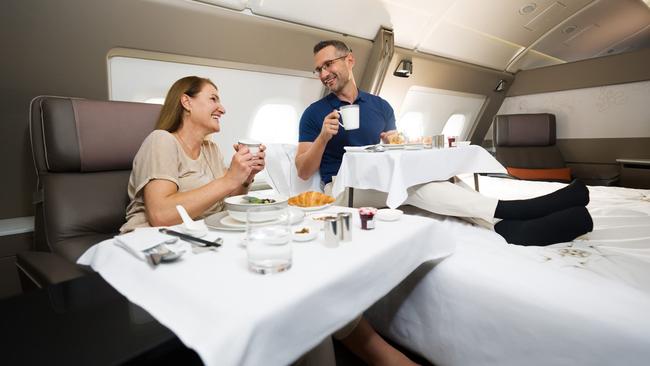High airfares a turn-off for domestic travel, says Melbourne Airport CEO
Melbourne Airport has blamed high airfares and capacity constraints on lacklustre domestic traffic over the typically busy Easter holiday period.

Melbourne Airport has blamed high airfares and capacity constraints on lacklustre domestic traffic over the typically busy Easter holiday period.
Monthly passenger figures released on Tuesday showed domestic travellers were down slightly down on April 2022, at a time when the airport expected growth.
Overall traffic was up thanks to a huge surge in international arrivals and departures, which took the total number of passengers passing through the airport to 2.71 million, compared to 2.26 million at the same time last year.
Melbourne Airport chief executive Lorie Argus said the flat domestic travel data reflected the impact of higher airfares and restrained airline capacity on passenger demand.
“We would hope that as our domestic airlines take delivery of more aircraft, they will add extra capacity to Melbourne to help moderate the cost of airfares,” she said.
“Higher airfares are challenging at a time when the cost of living is putting pressure on many household and small business budgets, and the industry needs to keep that front of mind to ensure Australians can afford to keep connected with the rest of the country.”

Sydney Airport CEO Geoff Culbert has previously expressed similar sentiments after seeing domestic traffic through Kingsford Smith flatline in the first quarter.
The Australian Competition and Consumer Commission recently noted fares had fallen from “historic highs” in late 2022 but said prices remained 13 per cent above pre-pandemic levels.
Domestic airfare data released by the Bureau of Infrastructure, Transport and Regional Economics showed economy fares holding steady in May.
The best discount prices were at 63.7 per cent of the long term average, and full price economy at 80.5 per cent, which was virtually unchanged since January.
There may be some better deals available in the business cabin, with those fares now at 54.5 per cent of the long term average, the lowest since August.
Ms Argus said in contrast to domestic capacity, international airline seats continued to grow with Singapore Airlines reintroducing an A380 to Melbourne in the place of Boeing 777s.
With 200 more seats than the 777, the A380 represented a “significant vote of confidence in the city and the state” said Ms Argus.
“This is the flagship of Singapore Airlines’ fleet, and until recently this aircraft was being used for flights to Frankfurt and New York, so having that capacity diverted to Melbourne is quite a coup,” she said.
“Singapore Airlines was one of the few carriers that stuck with Melbourne through the pandemic, and we are pleased to see them reaffirming their commitment to Victoria again today.”

Australian Bureau of Statistics’ data for March showed further signs of hope for the international tourism industry, with short-term overseas arrivals climbing to 73.3 per cent of pre-Covid-19 levels.
New Zealanders led the charge, while visitors from the UK closed in on pre-pandemic figures. Short-term arrivals from India were now well in excess of those in March 2019.
However, visitors from China, who were previously Australia’s biggest and most lucrative overseas source market, remained a long way behind pre-Covid-19 numbers.
The data showed there were 26,810 short term arrivals from mainland China in March compared to 124,370 in the same month four years ago.
Heading in the other direction, the number of Australians heading overseas for a short-term trip was at 88.5 per cent of 2019 figures in March.
New Zealand was the top destination, followed by Indonesia, India and Thailand.





To join the conversation, please log in. Don't have an account? Register
Join the conversation, you are commenting as Logout